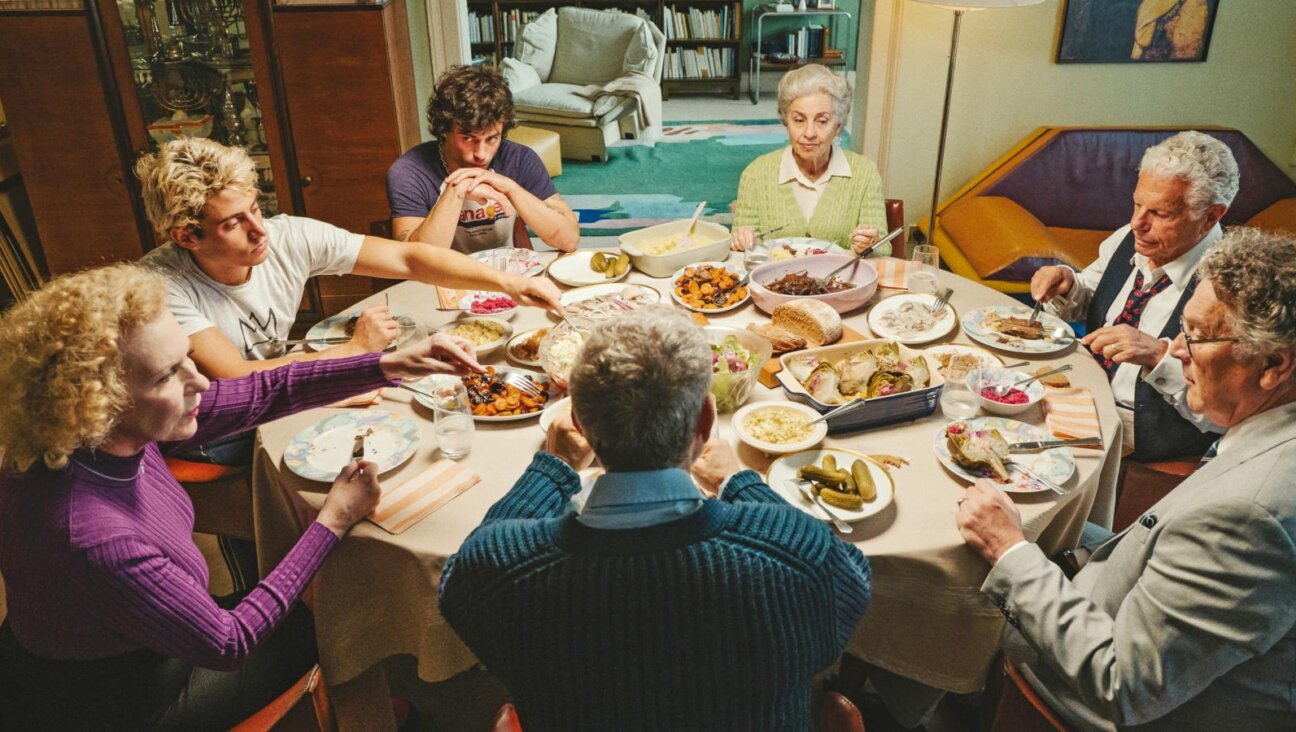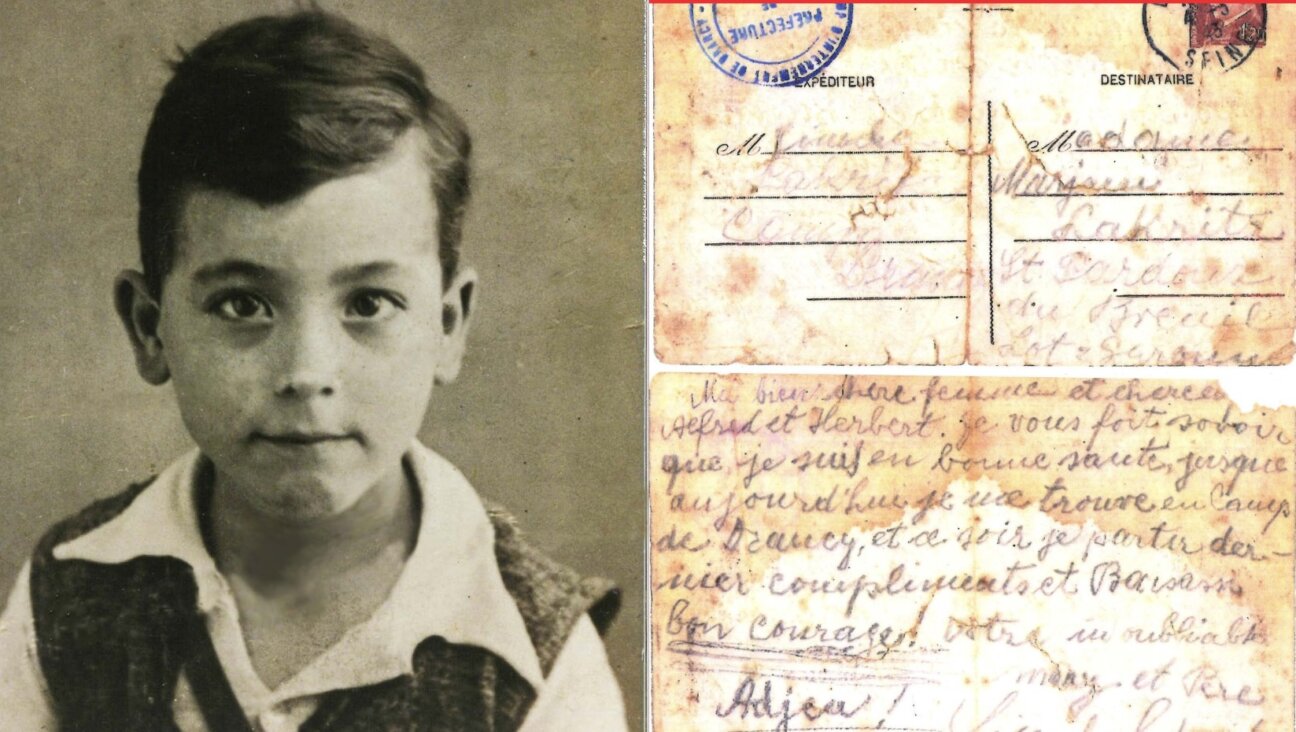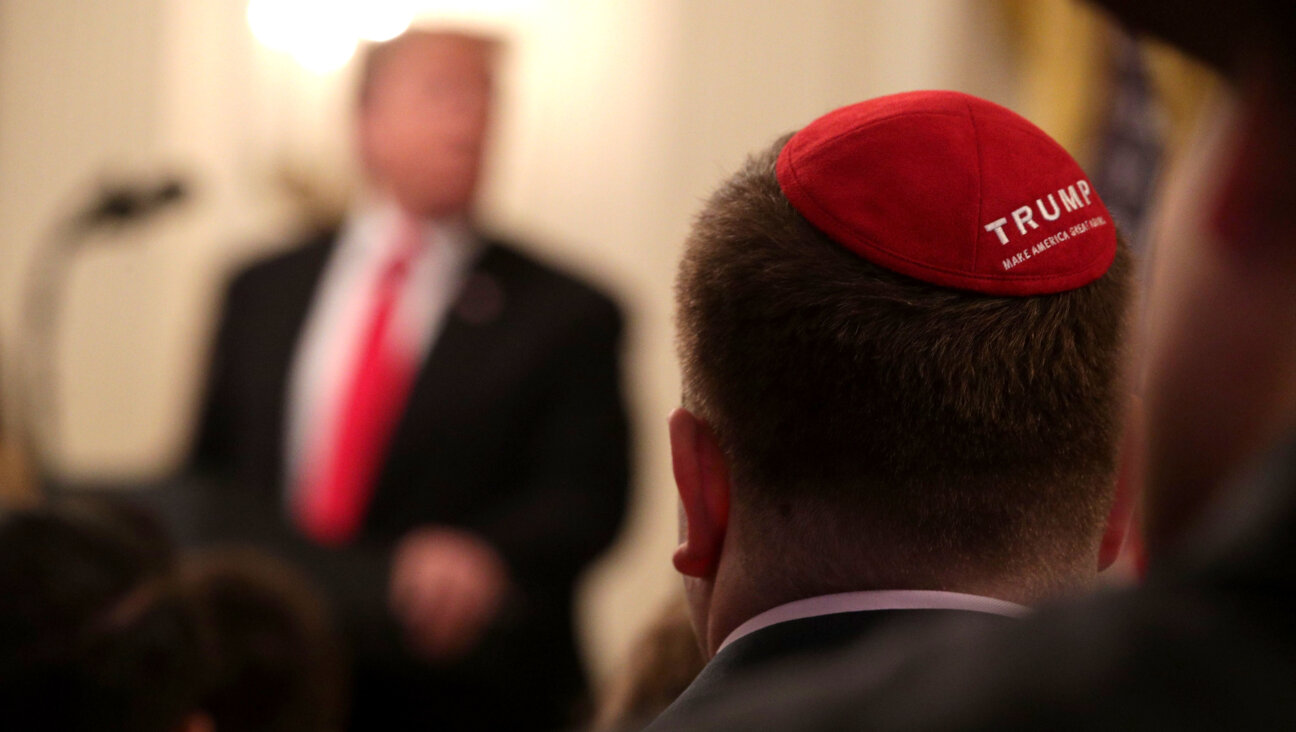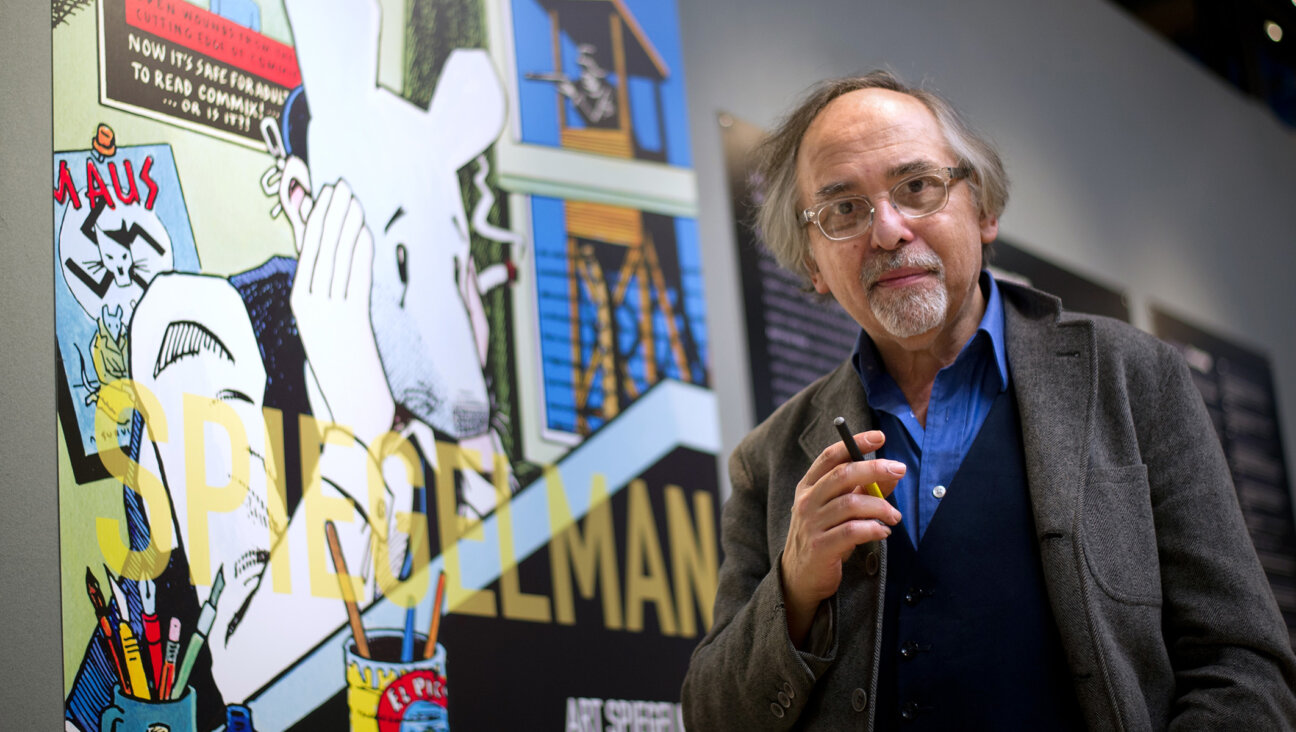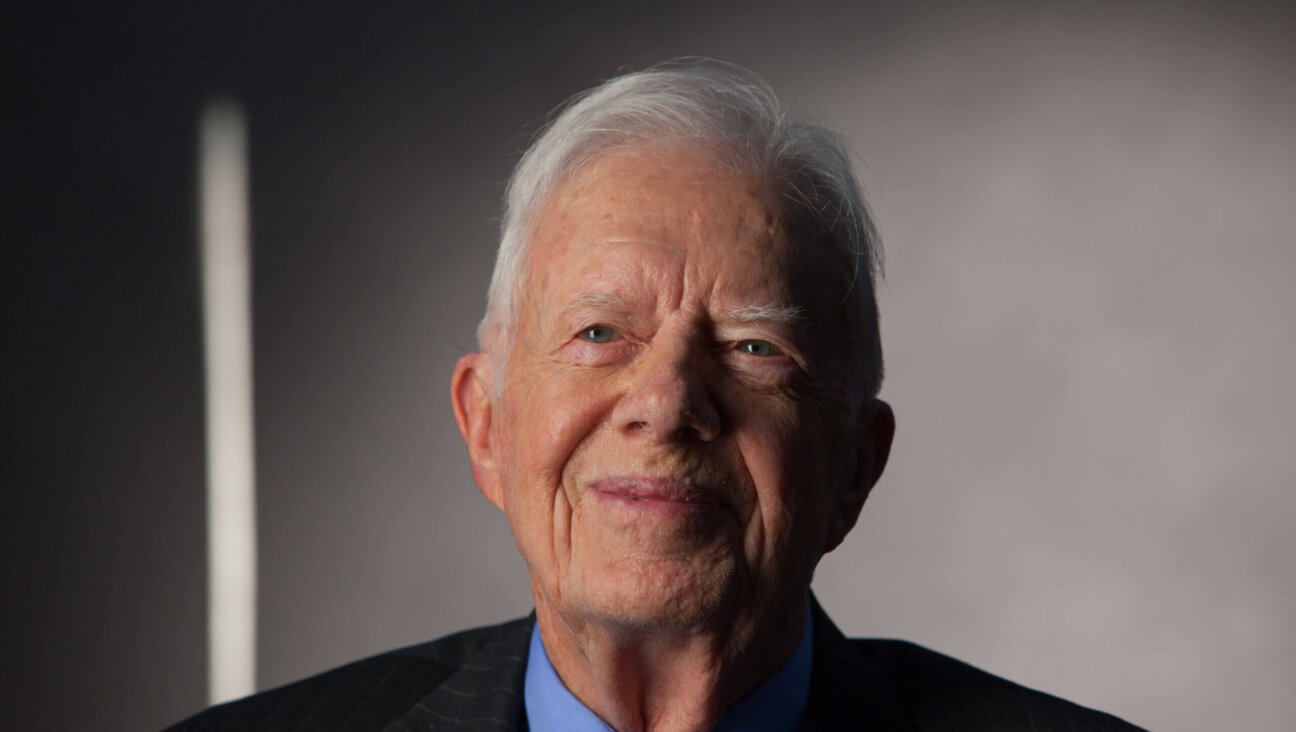Through Stained Glass, Brightly


Growing Panes: The Museum at Eldridge Street installed a new window in 2010. Image by Courtesy Eldridge Street Synagogue
If you were to poll the average American Jewish man and woman on the street about what constitutes normative American synagogue architecture, stained glass windows would probably be the very last thing that comes to mind. Some folks might be quick to conjure an image of an elaborately decorated Moorish-like interior; others, jokingly, might bring up the parking lot, and still others, especially if they are accustomed to davening in an Orthodox shul, might allude to the mechitzah, the partition that separates male and female worshippers.
Stained glass windows, though, rarely make the cut. At first blush, this omission is hardly surprising. When most American Jews think of stained glass, chances are they automatically associate the medium with the church — with the grand cathedrals of Europe — rather than with their own, more modest, home-grown institutions.
But wait a moment. That can’t be right. After all, the American synagogue is awash in stained glass and has been ever since the late 19th century. The handiwork of anonymous craftsmen as well as celebrated artists, stained glass windows adorn the sanctuaries of synagogues from coast to coast. Flooding the space with light and color, they’ve depicted scenes from the Bible, showcased its heroes (Moses is a particular favorite), celebrated the flora and fauna of the Holy Land and played with all manner of geometrical forms, such as the six-pointed Jewish star. More strikingly still, the stained glass window has lent itself inventively to the charitable gesture, becoming a luminous vehicle for saluting the generosity of the congregation’s members. By recording and inscribing in glass the names of those who contributed to the synagogue’s well-being, it evolved into a medium of memory all its very own, one that bears the weight of history, pane by glorious pane.
How is it, then, that we’re apt not to notice? It may well be that our aesthetic antennae are not nearly as acute as they ought to be, dulled by years of fidelity to an interpretation of the Second Commandment that redirects our attentions elsewhere. Despite the valiant efforts of Israel’s Bezalel School of Arts and Crafts (now the Bezalel Academy of Arts and Design), among others, to overturn the notion that Jews were “non-visuals,” as the American publication Current Literature categorically put it in 1909, American Jews at the grass roots have not been entirely comfortable with artistic expression.
In this instance, as in so many others, sociological concerns often colluded with history and tradition to render Jewish visual culture a low priority or, worse still, a waste of resources. Taking its members to task for spending money on décor, on “carved wood and ornamented bricks,” as the American Hebrew newspaper once related, rather than on education, communal sentiment militated against the wholesale embrace of aesthetics. In short order, Jewish visual culture took a back seat to other, seemingly more pressing, matters.
Still, we’ve come a long way. Just last month, Congregation Beth Elohim, in Brooklyn, was the happy recipient of a $250,000 grant from the National Trust for Historic Preservation/American Express to restore its aging building, including its once richly hued stained glass window. That the lively Brooklyn congregation, whose building dates back to 1909, saw fit to highlight the importance of its stained glass window in its winning proposal, suggests that our collective inattentiveness to the ocular might well be a thing of the past.
So, too, does the installation of a brand-new stained glass window at the Museum at Eldridge Street (or Congregation Kahal Adath Jeshurun, to hark back to its original name). Balancing the imperatives of preservation with the claims of the present, this 16-foot window, the artistry of Kiki Smith and Deborah Gans, replaces a series of clear glass panels above the Ark, which, in turn, replaced the original, late 19th-century composition. Warmly received by contemporary audiences, this new, starry-eyed creation not only takes its cue from the exuberant visual vocabulary of the sanctuary, which is richly appointed with gleaming stars and other painted surfaces, but also “completes it,” as Amy Stein-Milford, the deputy director of the Museum at Eldridge Street, recently told me.
By the time Adath Jeshurun decided in the 1880s to erect a grand house of worship on Eldridge Street, in the heart of the Lower East Side, Manhattan’s teeming Jewish enclave, stained glass had become all the rage within Jewish circles. From Cincinnati’s magnificent Plum Street Temple, which was dedicated in 1866, to New York’s Central Synagogue, which opened its East 55th Street doors in 1872, the modern American synagogue sanctuary was aglow, lit from within by stained glass as well as by the flicker of gas illuminations.
A generation earlier, though, the very idea of stained glass windows in an American synagogue was a novel and oftentimes controversial conceit. When, in May 1850, Congregation Anshi Chesed dedicated its spanking-new building, the very last word in modernity, on Norfolk Street, just a few blocks away from the future location of the Eldridge Street synagogue, the presence of a prominently situated, circular stained glass window kicked up quite a rumpus. Grumbling and murmuring darkly, as they are wont to do, some congregants went so far as to question whether it violated Jewish law.
Others took a slightly different tack. As far as the self-styled Honestus was concerned, the stained glass window was an unwelcome herald of modernity. “I have observed of late a disposition on the part of certain Israelites to attempt what they term improvements,” he lamented, writing in the pages of the Occident and American Jewish Advocate shortly after Anshi Chesed’s consecration. “But they go too far.”
What Honestus might have made of Eldridge Street’s many stained glass windows or those of Congregation Sherith Israel in San Francisco, which confidently featured Moses descending from El Capitan rather than Mount Sinai, is anyone’s guess. But even he would be hard put to deny their sparkle.
A message from our Publisher & CEO Rachel Fishman Feddersen

I hope you appreciated this article. Before you go, I’d like to ask you to please support the Forward’s award-winning, nonprofit journalism so that we can be prepared for whatever news 2025 brings.
At a time when other newsrooms are closing or cutting back, the Forward has removed its paywall and invested additional resources to report on the ground from Israel and around the U.S. on the impact of the war, rising antisemitism and polarized discourse.
Readers like you make it all possible. Support our work by becoming a Forward Member and connect with our journalism and your community.
— Rachel Fishman Feddersen, Publisher and CEO







